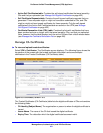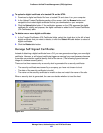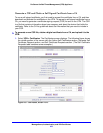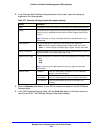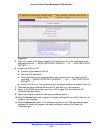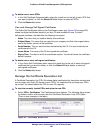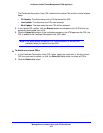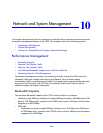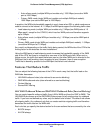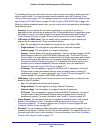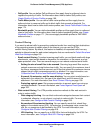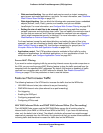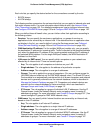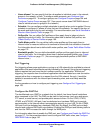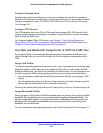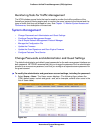
Network and System Management
429
ProSecure Unified Threat Management (UTM) Appliance
- Auto-rollover mode (multiple WAN port models only). 1000 Mbps (one active WAN
port at 1000 Mbps).
- Primary WAN mode (single WAN port models and multiple WAN port models).
1000 Mbps (one active WAN port at 1000 Mbps).
In practice, the WAN-side bandwidth capacity is much lower when DSL or cable modems are
used to connect to the Internet. At 1.5 Mbps, the WAN ports support the following traffic rates:
• Load balancing mode (multiple WAN port models only). 3 Mbps (two WAN ports at 1.5
Mbps each), except for the UTM150, which has four WAN ports and therefore supports
up to 6 Mbps.
• Auto-rollover mode (multiple WAN port models only). 1.5 Mbps (one active WAN port at
1.5 Mbps).
• Primary WAN mode (single WAN port models and multiple WAN port models). 1.5 Mbps
(one active WAN port at 1.5 Mbps).
As a result, and depending on the traffic that is being carried, the WAN side of the UTM is the
limiting factor for the data rate for most installations.
Using the WAN ports in load balancing mode increases the bandwidth capacity of the WAN
side of the UTM, but there is no backup in case one of the WAN ports fails. When such a
failure occurs, the traffic that would have been sent on the failed WAN port is diverted to the
WAN port that is still working, thus increasing its load. However, there is one exception:
Traffic that is bound by protocol to the WAN port that failed is not diverted.
Features That Reduce Traffic
You can adjust the following features of the UTM in such a way that the traffic load on the
WAN side decreases:
• LAN WAN outbound rules (also referred to as service blocking)
• DMZ WAN outbound rules (also referred to as service blocking)
• Content filtering
• Source MAC filtering
LAN WAN Outbound Rules and DMZ WAN Outbound Rules (Service Blocking)
You can control specific outbound traffic (from LAN to WAN and from the DMZ to WAN). The
LAN WAN Rules screen and the DMZ WAN Rules screen list all existing rules for outbound
traffic. If you have not defined any rules, only the default rule is listed. The default rule allows
all outgoing traffic. Any outbound rule that you create restricts outgoing traffic and therefore
decreases the traffic load on the WAN side.
Each rule lets you specify the desired action for the connections that are covered by the rule:
• BLOCK always
• ALLOW always



